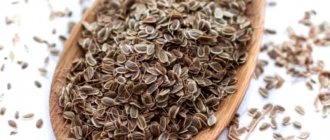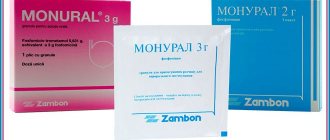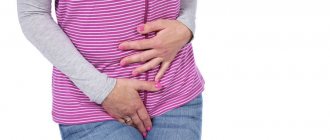Cystitis is a disease associated with inflammation of the mucous membrane and tissues of the bladder. In most cases it has a long course. Often, the infection can be in the body in an inactive state (resting state), but as soon as you become hypothermic or weaken your immune system, cystitis immediately makes itself felt.
According to statistics, women are more often affected by the disease. Every second girl felt the following symptoms:
- burning or pain when urinating;
- discomfort in the lower abdomen.
As mentioned above, one of the main factors of this disease is hypothermia. This gave rise to the opinion that it can be cured independently by heating. Of course, heat for cystitis can ease the symptoms of the disease, but you can only get rid of the disease with the help of drug therapy, which is carried out under the supervision of the attending physician.
If we talk specifically about methods that speed up recovery and cause relief of symptoms, then a hot bath for cystitis is one of the most effective and efficient methods.
Does heat relieve pain in cystitis?
When the bladder becomes infected, colonies of pathogens attach to the walls of the organ, causing spasms of smooth muscles. The process is accompanied by incessant pain in the lower abdomen. Treatment of cystitis should be comprehensive: antibiotics, diuretics, mycoseptics, antispasmodics.
In order not to overload the systemic bloodstream with the breakdown products of medications, spasms of the urethra and bladder can be relaxed by local heating of the problem area. If the inflammation is caused by simple hypothermia, you can take a bath at a comfortable temperature (about 37.5 ° C) - this will help you relax and forget about the pain.
Such procedures have a beneficial effect on the entire body due to the ingredients that are used during heating. Medicinal supplements of natural origin speed up the healing process, enhance the effectiveness of medications, and consolidate the results of drug treatment.
Collections of medicinal plants that are used for baths have analgesic, antimicrobial, relaxing, and disinfecting effects. These are valerian, aspen, chamomile, St. John's wort and others. Alternating herbal infusions added to the bath increases the effectiveness of treatment.
How does heat work for cystitis: pros and cons
Heat has a positive effect on the body. Advantages of warm baths for cystitis:
- pain is reduced;
- spasms go away;
- blood circulation in the urinary mucosa increases, which speeds up recovery.
Women ask doctors if they can bask in a bath if they have cystitis, because this will improve their well-being. You can take warm baths, but only in complex treatment of cystitis and only after the doctor’s permission.
Before deciding whether it is possible to heat cystitis with a bath, you should also familiarize yourself with the disadvantages of thermal procedures:
- With a bacterial disease, there is a risk of active discharge of pus or the formation of an abscess after a hot bath.
- Heat increases microcirculation, as a result of which blood may appear in the urine.
- Due to illness, the temperature often rises, and hot water will only worsen the woman’s condition, who may even lose consciousness.
- If you stay in hot water for a long time, your body temperature rises. In this state, favorable conditions are created for the proliferation of bacteria.
Most doctors advise that if you are sick, avoid any baths altogether, and warm up with dry heat, for example, a heating pad or a bag of warm salt or sand.
As a preventive measure, a warm bath is perfect for hypothermia and fear of getting sick.
When should you not take heat?
You should not take a bath, steam in a sauna or shower with hot water if you have cystitis in the following cases:
- Stage of development of the disease. If acute cystitis has just begun to form, then exposure to heat can significantly accelerate the development of microorganisms.
- Hemorrhagic cystitis. With this form of the disease, bleeding may increase.
- Concomitant pathology of the cardiovascular system. Hypertension occupies a special place among the pathologies of this group. Vasodilation can lead to exacerbations such as hemorrhagic stroke or hemorrhages in other organs.
In such cases, the effect of applying heat will be negative. It is worth noting that the active form of the infectious process is the main contraindication to thermal treatment methods. Thermostat conditions are created in the bladder, that is, a moist and warm environment.
In addition, due to the inflammatory process, it is possible to release protein structures from the affected walls of the bladder, which will serve as a breeding ground for the microorganism; thus, with this pathology, heat accelerates the process of reproduction and development of bacteria by half.
In addition to the fact that this treatment method creates favorable conditions for microorganisms, it also causes vasodilation. As a result of this, the permeability of their walls increases significantly. Microorganisms are able to enter the bloodstream and cause distant septic processes within the body; with this route of infection, the appearance of subdiaphragmatic, hepatic, and interloop intestinal abscesses becomes possible.
Warming up for cystitis
Knowing the cause of the disease, it is easier to answer how to treat it. Let's return to the above-mentioned heating for cystitis. Is it permissible?
This technique is really good for colds. But in the case of cystitis, we are talking about a bacterial infection. The main element of the disease is inflammation. Heat will help increase blood flow, and inflammatory processes will become stronger.
In addition, heating promotes the spread of bacteria throughout the body. This means that heating the bladder during cystitis is the wrong approach. In case of inflammation, this is not easy, it does not help to heal, but it can also do a lot of harm.
Then why is the myth that warming the stomach is good for cystitis is so widespread? It's simple - heat dilates blood vessels and has an antispasmodic effect. That is, it does not affect the disease itself, but reduces its symptoms.
This is the worst thing - there is practically no pain left, the woman becomes confident that she has almost recovered, and the inflammation begins to occur in a latent form, eventually becoming chronic cystitis.
It is necessary to understand that heating is not always necessary for cystitis.
Is a hot bath beneficial?
Is it possible to take a hot bath with cystitis? Increasing the temperature of the bath water will only complicate the situation. Even if the spasm passes after such warming up and the condition improves, increased blood flow contributes to the progression of the infection along the ascending line, involving the kidneys in the inflammatory process. This is dangerous due to such a serious complication as pyelonephritis.
Visiting a bathhouse or sauna provides a similar effect: for some time, your health may improve, but such warming up does not fully solve the problem of cystitis.
Bath and sauna
In case of acute inflammation, visiting a sauna or steam bath is prohibited. Warming up the entire body will cause the infection to spread through the urinary tract (ureters, kidneys, urethra).
It is allowed to go to a bathhouse or sauna during remission of chronic cystitis. Active sweating will help remove harmful substances and reduce the likelihood of relapse.
Symptoms
Typically, cystitis is indicated by a frequent urge to urinate and a feeling of an incompletely emptied bladder. In addition, symptoms include:
- Discharge of urine in small portions.
- Burning sensation experienced during bowel movement, discomfort.
- Cloudy discharge, sometimes with blood or mucus.
- Frequent visits to the toilet at night.
- Having to strain to start urinating.
- Increase in temperature.
- General weakness of the body.
- Urine with a strong and unpleasant odor.
- Pain in the spine and kidneys.
If at least 2-3 of the listed symptoms appear, you should immediately consult a doctor. If the manifestations are ignored, the woman may develop chronic cystitis, the symptoms and treatment of which are somewhat different from the acute (initial) one.
Types of baths used for bladder inflammation
For cystitis, you can take a lying, sitz or foot bath. The amount of medicinal additives depends on the type of bath and the volume of water.
Warming up your feet
If there are no contraindications such as varicose veins, then in this version of warming up the temperature can be increased. This will help increase blood flow in the lower part of the body - local warming of the legs does not contribute to the spread of pathogenic microflora. To enhance the effect, add herbal infusion or mustard powder to the water.
Safe ways to warm up
Among the safe warming procedures carried out for cystitis, there are 6 different methods:
- Fill the heating pad with water, the temperature of which is 37-40 degrees. Place in the perineum or suprapubic area. Wait like this for half an hour.
- Pour table salt or sand preheated in a frying pan into a fabric bag. Place in the bladder area.
- Heat two halves of red brick. Next, put them in an iron bucket and sit on it. The sides of the bucket must first be covered with cloth to avoid burns. It is necessary to sit until the brick stops emitting heat. Next, cover yourself and lie under the blanket.
- It is recommended to warm your feet if you have cystitis (the water should not be hotter than 37 degrees). Place your feet in a container of water for 10-15 minutes. Next, you need to wipe them thoroughly and keep them warm. This warming method is recommended before going to bed.
- Boil the potatoes in their skins, then peel and grind until pureed. Place the potato mixture on a cloth. Apply a compress of warm puree to the lower abdomen for 25-30 minutes.
The safest method of warming up is using the heat of your hands. Before going to bed, you need to place your palms on the bladder area. Warm hands will help relieve pain.
The effect of the procedure on the body
A hot bath has positive and negative sides not only during inflammatory processes, but also in everyday life. In addition, you need to know how to properly take water procedures.
Positive Impact:
Negative Impact:
Recommended topic:
Drops for cystitis
- A hot bath puts stress on the heart muscle.
- The skin becomes dry and the aging process develops faster.
- With vascular hypotension, under the influence of hot water, a decrease in blood pressure occurs.
- During pregnancy, a hot bath increases the risk of miscarriage. Before the birth of a child, a woman is only recommended to take a hygienic shower.
The benefits of a bath are obtained if you take it correctly. You cannot lie in it so that the water covers your chest. Take a comfortable position to relax your muscles, place a special cushion or towel under your head. After a therapeutic bath, you should not rinse with water from the shower; you just need to blot your skin with a towel.
Contraindications
Basking with cystitis is strictly contraindicated in the following cases:
- At elevated body temperature.
- If a woman has weakness, nausea, or a headache.
- If traces of blood appear in the urine.
- If you have unbearably severe pain in the lower abdomen, you need to call an ambulance.
- During menstruation, heating leads to severe bleeding.
- If you have a tendency to vaginal bleeding.
- In the event that a woman is taking anticoagulants.
- It is also forbidden to warm yourself during pregnancy.
- You should not use this method in the summer heat.
Acute cystitis is a contraindication to heating at high temperatures, visiting saunas, and hot baths.
How to take a bath properly
In order for the procedure to create a favorable effect, it is important to strictly follow all the rules:
- Monitor the optimal water temperature - up to 37.5 ° C;
- You should take a bath in a warm room and in a calm, relaxed state;
- When warming up, a sitting position is preferable;
- It is useful to add mustard, soda solution, herbal decoctions or simply dried medicinal plants to bath water;
- After warming up, you should not overcool, go outside or do heavy physical work;
- Keep track of the time: 10-15 minutes are enough to take a bath; in the future, the water will cool, creating the opposite effect;
- The time for warming up is agreed upon with the doctor individually, the best option is before bedtime in order to rest in bed, prolonging the therapeutic effect, and to prevent hypothermia;
- The frequency of taking baths for cystitis is 3-4 times a day, if there are no contraindications and there are conditions for bed rest;
- After the procedures, you cannot take a regular bath or shower, even a hygienic one: skin soaked in herbal infusion continues to receive a healing effect;
- The course of treatment with warming baths lasts up to 10 days on average.
After the procedure, urologists recommend urinating without leaving the bath so that active substances can better penetrate the urethra.
It is better to choose a plastic or enamel container for baths. Other types of metal can come into contact with the active components of supplements, creating compounds harmful to the body.
Useful baths for cystitis
To quickly recover from cystitis, you are allowed to lie in a bathtub filled with warm water, but not for long. You can immerse yourself in water up to the level of your heart. It is recommended to use additional components that will help improve your overall condition.
Warming up your feet
A good alternative to a bath is a foot bath, which can alleviate the condition and quickly relieve the symptoms of cystitis.
It is better to do the procedure before bed. Doctors advise adding a little mustard powder or chamomile/calendula infusion, soda or sea salt to the water.
The maximum water temperature is 39°C. The procedure lasts approximately 20 minutes. After the bath, you need to wipe your feet dry, put on woolen socks and lie down under the blanket.
Sitz baths
A sitz bath for cystitis warms only the pelvic organs. The advantage is the smaller volume of antiseptic solution used.
It is better to take an enamel or plastic basin so that it can hold at least 10 liters of water. Ideally, the pelvic area is immersed in water up to the navel line. Water temperature – no more than 40 degrees. You are allowed to sit for no longer than 30 minutes, covering your legs with a towel. After the procedure, the body is wiped dry, clean underwear is put on,
A soda solution is suitable for preparing a sitz bath. For 1 liter of water you need 15-20 g of soda. The concentrate is diluted in a bowl of warm water. Bacteria that cause cystitis multiply in an acidic environment, but die in an alkaline environment. Baking soda also has an analgesic and calming effect.
Furacilin solution has a proven antimicrobial effect. To prepare a sitz bath you will need 30 tablets per 10 liters of water.
Drug treatment of cystitis
Thermal procedures have a good effect in eliminating the symptoms of the disease. They eliminate pain, burning and spasms, but cannot fully fight the cause of the disease - microorganisms.
Therefore, if the above symptoms do not leave the patient within one to two days, you should seek help from a specialist. After the examination, the doctor will prescribe treatment aimed at eliminating the causative agent of cystitis.
You should undergo examinations such as a general urine test, a Nechiporenko urine test, a general blood test and urine culture for sterility and sensitivity to antibiotics.
The most common causative agent of cystitis is Escherichia coli. It is a permanent resident of the adult intestine, and due to the peculiarities of the anatomical structures, it easily enters the urethra and urinary tract, causing infectious and inflammatory diseases.
In addition to it, cystitis can be caused by:
- staphylococcus;
- streptococcus;
- Klebsiella;
- Pseudomonas aeruginosa;
- Proteus;
- enterobacteria;
- mushrooms of the genus Candida;
- chlamydia;
- mycoplasma.
After determining the cause of the disease, it is necessary to decide on the choice of drug. It is worth remembering that independent, uncontrolled use of antibiotics, uroantiseptics and antifungal drugs can only lead to “healing” of the disease and its transition to a chronic condition. After all, each drug has its own indications and range of action.
It is forbidden to take diuretic medications, such as furosemide, if the bladder is inflamed.
The following drugs are effective in combating cystitis pathogens:
- Furazolidone.
- Ciprofloxacin.
- Monural.
- Nitroxoline.
- Nevigramon.
- Urolesan.
How to get rid of cystitis?
13.05.2020
Cystitis is an inflammation of the bladder . This disease occurs very often in people. But more often cystitis occurs in the female half of society. Cystitis bladder infections is very common .
Symptoms:
- painful urination ;
- burning sensation when urinating ;
- no feeling of bladder ;
- urine may be cloudy in color;
- the smell of urine becomes unpleasant and it begins to smell rotten;
- there may be blood in the urine ;
- pain in the lower abdomen .
reasons for the disease of cystitis , for example, such as: decreased immunity , hypothermia, especially hypothermia of the feet , poor hygiene, poor diet (eating a lot of salty and spicy foods, alcoholic beverages), constant nervous stress, negative emotions, psychological overload, insufficient sleep, wearing tight and synthetic underwear, active sex life and frequent changes of partners, pregnancy, hormonal imbalance, sedentary lifestyle.
Diagnosis of the disease
If a person has symptoms of this disease, they should consult a doctor . He will conduct an examination and write out directions for tests , such as: general urinalysis , ultrasound of the bladder , cystoscopy. There are also additional tests : kidney ultrasound , cystography, uroflowmetry. Based on the test , the specialist will prescribe the necessary medications for the treatment of cystitis and give advice to relieve symptoms.
Treatment and prevention of cystitis
During treatment you should adhere to a special diet . Avoid eating spicy, fatty and smoked foods, as well as foods with citric acid. You need to drink plenty of fluids (water, natural juices, fruit drinks). Herbal teas also help very well, for example, you can drink a decoction of lingonberry leaves, cranberries, chamomile flowers or St. John's wort. abdomen helps relieve pain associated with this disease . It is worth paying special attention to the rules of personal hygiene. Also an excellent folk remedy for this disease is warm herbal baths. Oriental medicine methods help well, such as acupuncture , acupressure , moxotherapy and stone therapy (warming the lower back with hot stones). blood stagnation , increase immunity and help get rid of the symptoms of cystitis .
of drugs for the treatment of cystitis on the shelves of pharmacies. It is best to consult a doctor . The main and important rule for taking medications is to take the full course. Otherwise, this disease may become chronic.
To prevent cystitis you need to maintain your immunity , harden your body, don’t get too cold, get enough sleep, don’t be nervous, maintain personal hygiene and watch your diet, wear underwear made from natural fabrics, and don’t put off going to the toilet.
Cystitis during pregnancy
In pregnant women, advanced cystitis can cause nausea . you treat cystitis on your own during pregnancy; this can harm both the expectant mother and the child. Antibiotics are available especially for pregnant women to treat this disease. You should not drink coffee or drink alcohol while taking medications.
Published in Urological diseases Premium Clinic
Who are contraindicated for warming baths?
Even if all recommendations are strictly followed, not everyone can warm up in the bathroom. Among the main contraindications:
- Acute phase of cystitis;
- High body temperature;
- Concomitant diseases for which heating is not indicated;
- Critical days for women;
- Headache;
- General weakness, dyspeptic disorders;
- Muscle and joint pain;
- Urine mixed with blood and pus;
- Oncology;
- Skin diseases, open wounds;
- Hematuria – hot water increases bleeding, impairs the healing of wounds on the mucous membrane;
- Pregnancy - temperature changes increase the tone of the uterus and provoke premature birth; redistribution of blood flow can worsen the blood supply to the fetus.
To warm up or not?
If the signs of cystitis have just manifested themselves, urologists recommend thermal procedures. Provided that the body temperature is normal and there are no other inflammatory processes in the body, you can take warm baths with the addition of medicinal herbs. But if the following symptoms occur, you should never resort to heating:
- pain and pain when urinating;
- spasms;
- blood in the urine.
All thermal procedures are also prohibited if hematuria is detected (detected by the results of a urine test), otherwise bleeding that is dangerous to health and life cannot be ruled out.
Warming is also contraindicated if the patient is pregnant - even in the absence of cystitis, such procedures can cause a miscarriage. And you should not resort to using heat during menstruation.
Hot bottle between legs for cystitis
Men are advised to keep a hot bottle between their legs for cystitis. This method of warming eliminates pain and burning. Before use, you should consult your doctor; you can use the bottle only if there are no contraindications.
Women in some situations should not use warming, for example, if blood is detected in the urine, otherwise bleeding may occur during menstruation. It is strictly contraindicated to heat cystitis with a bottle during pregnancy, as this can provoke premature birth.
Symptoms
Inflammation of the bladder is characterized by the symptoms listed below:
- cutting pain when going to the toilet;
- constant desire to empty the bladder (about 20 times a day or more);
- a feeling that when urinating, not all the urine comes out of the bladder;
- presence of pain in the bladder area, pain can radiate to the lower back, kidneys or abdomen;
- hyperthermia;
- weakness.
Note. If therapy is delayed, inflammation of the bladder can cause the development of serious renal pathologies, for example, pyelonephritis.











